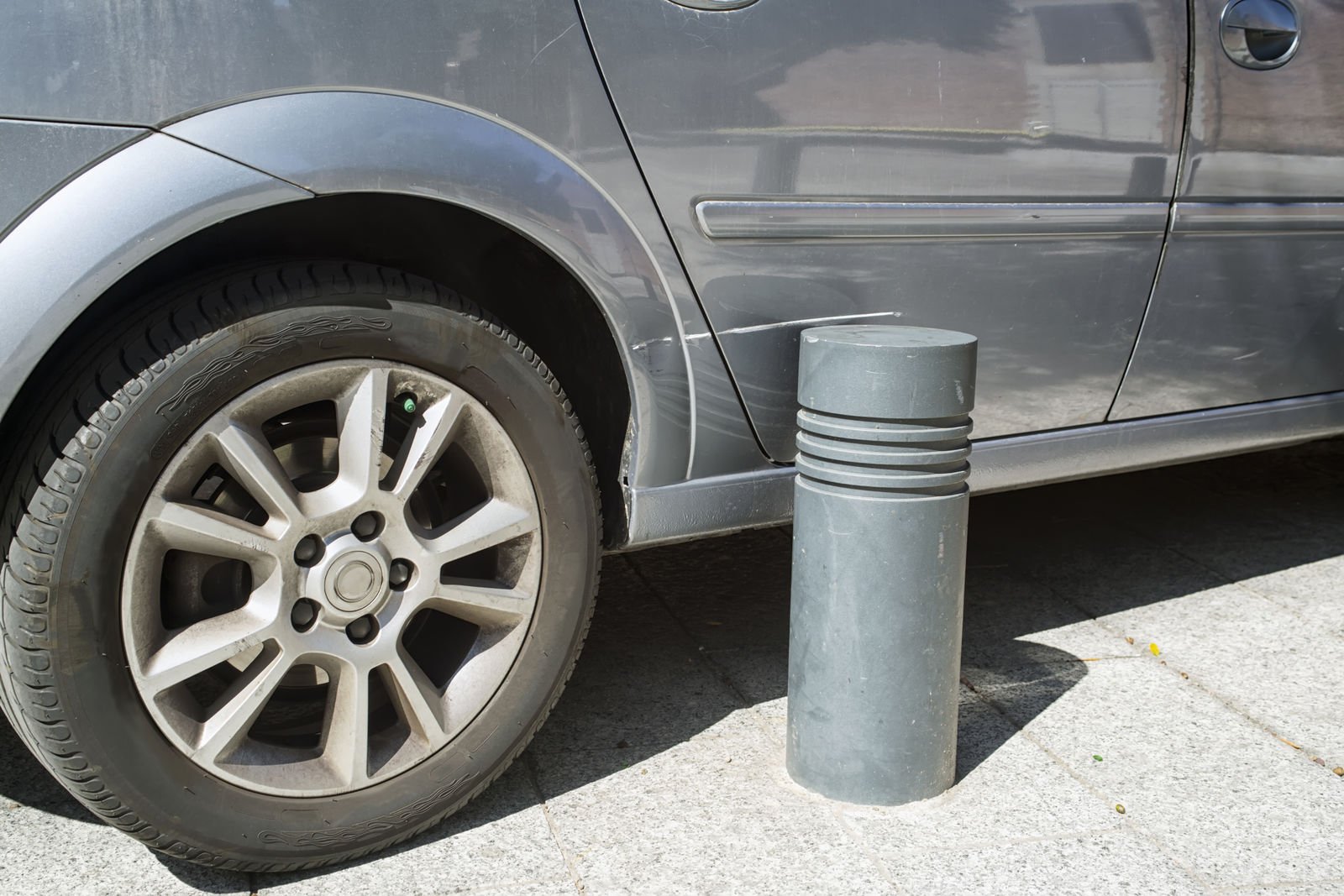How much car insurance coverage do I need for a new car?
If you are wondering how much car insurance coverage do I need for a new car, the answer is that it depends. If you don't have a leased vehicle, you can carry minimum coverage, which costs an average of $44/mo. However, full coverage is usually best for new cars and costs an average of $132/mo.
Read more Secured with SHA-256 Encryption





Table of Contents
Table of Contents


Licensed Insurance Agent
Scott W Johnson is an independent insurance agent in California. Principal Broker and founder of Marindependent Insurance Services, Scott brings over 25 years of experience to his clients. His Five President’s Council awards prove he uses all he learned at Avocet, Sprint Nextel, and Farmers Insurance to the benefit of his clients. Scott quickly grasped the unique insurance requirements of his...
Scott W. Johnson


Licensed Insurance Agent
Jeffrey Manola is an experienced insurance agent who founded TopQuoteLifeInsurance.com and NoMedicalExamQuotes.com. His mission when creating these sites was to provide online consumers searching for insurance with the most affordable rates available. Not only does he strive to provide consumers with the best prices for insurance coverage, but he also wants those on the market for insurance to ...
Jeffrey Manola
Updated May 2024
- Most states require a minimum amount of car insurance before you can legally drive or register a car, which commonly includes liability coverage
- If you have a car loan or lease, or a newer car, consider full coverage to protect your vehicle better
- The average minimum insurance policy in the U.S. costs about $44 a month, while full coverage plans typically cost $132 per month
You probably already know that you need insurance when you buy a new car, but you may be asking how much car insurance do I need for a new car. The amount of insurance you need can be confusing, especially if you’re unfamiliar with the types of car insurance coverage available for purchase.
There are several factors to consider when you need insurance. For example, nearly every state has a minimum liability requirement. Some states also require uninsured motorist or personal injury protection insurance. You’ll also likely need more insurance on a financed car.
You can learn more about your coverage options below, including what you’ll need before you can legally drive. Then, compare rates with as many companies as possible to make sure you get the most affordable policy for your new car.
Minimum Car Insurance Requirements by State
When you’re in the market for car insurance, the first thing you should look is minimum car insurance required by state. Besides Virginia and New Hampshire, every state requires at least liability auto insurance coverage before driving or registering a car. Check below to see how much insurance you need in your state.
Car Insurance Liability Requirements by State
| State | Minimum Liability Requirements |
|---|---|
| Alabama | 25/50/25 |
| Alaska | 50/100/25 |
| Arizona | 15/30/10 |
| Arkansas | 25/50/25 |
| California | 15/30/5 |
| Colorado | 25/50/15 |
| Connecticut | 25/50/20 |
| Deleware | 25/50/10 |
| District of Columbia | 25/50/10 |
| Florida | 10/20/10 |
| Georgia | 25/50/25 |
| Hawaii | 20/40/10 |
| Idaho | 25/50/15 |
| Illinois | 25/50/20 |
| Indiana | 25/50/25 |
| Iowa | 20/40/15 |
| Kansas | 25/50/25 |
| Kentucky | 25/50/25 |
| Lousiana | 15/30/25 |
| Maine | 50/100/25 |
| Maryland | 30/60/15 |
| Massachusetts | 20/40/5 |
| Michigan | 20/40/10 |
| Minnesota | 30/60/10 |
| Mississippi | 25/50/25 |
| Missouri | 25/50/25 |
| Montana | 25/50/20 |
| Nebraska | 25/50/25 |
| Nevada | 25/50/20 |
| New Hampshire | 25/50/25 |
| New Jersey | 15/30/5 |
| New Mexico | 25/50/10 |
| New York | 25/50/10 |
| North Carolina | 30/60/25 |
| North Dakota | 25/50/25 |
| Ohio | 25/50/25 |
| Oklahoma | 25/50/25 |
| Oregon | 25/50/20 |
| Pennsylvania | 15/30/5 |
| Rhode Island | 25/50/25 |
| South Carolina | 25/50/25 |
| South Dakota | 25/50/25 |
| Tennessee | 25/50/15 |
| Texas | 30/60/25 |
| Utah | 25/65/15 |
| Vermont | 25/50/10 |
| Virginia | 25/50/20 |
| Washington | 25/50/10 |
| West Virginia | 25/50/25 |
| Wisconsin | 25/50/10 |
| Wyoming | 25/50/20 |
- Car Insurance Coverage
- What is uninsured motorist property damage?
- Does car insurance follow the car or the driver?
- Budget Rental Car Insurance Review [2025]
- Best Rental Car Reimbursement Coverage in 2025 (Find the Top 10 Companies Here!)
- What states have full glass coverage?
- Does car insurance cover hitting a dog?
- Can I extend my car insurance for a month?
- Can I add someone to my car insurance for a week?
- Does car insurance cover car seats?
- Questions About Coverage
- Is car insurance paid monthly?
- What if I can’t pay my car insurance deductible?
- Why do some car insurance companies only write six-month policies?
- Can you buy car insurance for six months?
- Is basic car insurance coverage a smart choice?
- Cheap Car Insurance for Leased Cars in 2025 (Big Savings With These 10 Companies!)
- Best Personal Injury Protection (PIP) Car Insurance in 2025 (Top 10 Companies)
- What is the minimum amount of liability car insurance coverage required?
- Best Hot Rod Car Insurance in 2025 (Find the Top 10 Companies Here!)
- Compare Full Coverage vs. Liability Car Insurance: Rates, Discounts, & Requirements [2025]
- What is a non-owner car insurance policy?
- Car Insurance Coverage Limits: Explained Simply
- Can I transfer car insurance to another person?
- How do I check my car insurance expiration date?
- How does GAP insurance work after totaling a car?
- Can I drive my parents car without insurance? [2025]
- How do I get my own car insurance?
- Does my car insurance cover my child?
- Can I pause my car insurance policy? [2025]
- Compare State Employee Car Insurance Rates [2025]
- Can I get an insurance quote without a car?
- Can married couples have separate car insurance policies?
- Can I use my own car insurance when renting a car?
- Can I rent a car without having insurance?
- How do I add someone to my car insurance for a day?
- GAP Insurance Refund: Is It Possible And How Do I Get It
- Compare Primary vs. Secondary Car Insurance: Rates, Discounts, & Requirements [2025]
- Best Kit Car Insurance in 2025 (Your Guide to the Top 10 Companies)
- What are the pros and cons of PIP insurance?
- Compare Best Green Car Insurance Companies [2025]
- Classic vs. Standard Car Insurance [2025]
- Do I need the additional car insurance coverage options?
- How much do tinted windows affect car insurance rates?
- Can I purchase additional car insurance during a storm?
- Does car insurance cover food delivery vehicles?
- When does car insurance start?
- Cheap 24-Hour Car Insurance in 2025
- Cheap No-Deposit Car Insurance in 2025 (Unlock Big Savings From These 10 Companies)
- Best International Car Insurance in 2025 (Your Guide to the Top 10 Companies)
- How much does mileage affect car insurance rates?
- Can I get car insurance for just part of the year?
- How can I add a car to my insurance policy?
- What are my rights when I am refused car insurance coverage?
- Should I buy car insurance through a broker or direct from the company?
- How do I terminate my car insurance policy?
- How do I find out if GAP insurance is included in my car lease?
- Compare Commercial vs. Personal Car Insurance: Rates, Discounts, & Requirements [2025]
- What is included in a standard car insurance policy?
- How do I change car insurance agents?
- How much car insurance should I carry on an antique car?
- What if an uninsured friend wrecks my car? (Three Types of Borrowers)
- What Is Covered by Your Car Insurance
- Will my car insurance go up if I hit a deer with my car?
- Does car insurance cover falling asleep at the wheel?
- Does car insurance cover clutch replacement?
- Are car insurance inspections required?
- Does car insurance cover road debris damage?
- Does car insurance cover air conditioning?
- Does car insurance cover broken car windows?
- Does car insurance cover a bad engine?
- Does car insurance cover all the drivers in a single home?
- Does car insurance cover tire blowouts?
- Does car insurance cover non-accident repairs?
- Does car insurance cover towing?
- Does car insurance cover performance parts?
- Does car insurance cover stolen items?
- Does car insurance cover catalytic converters?
- Does car insurance cover a hydrolocked engine?
- Does car insurance cover bullet holes?
- Does car insurance cover water leaks?
- Does car insurance cover side mirror repair?
- Does car insurance cover using the wrong fuel?
- Does car insurance cover paint jobs?
- Does GAP insurance cover stolen cars?
- Compare Collision Car Insurance: Rates, Discounts, & Requirements [2025]
- Does car insurance cover moving truck rentals?
- Compare Ding & Dent Car Insurance: Rates, Discounts, & Requirements [2025]
- Does car insurance cover motorcycles?
- Does car insurance cover hitting a pedestrian?
- Does car insurance cover excluded drivers?
- Does car insurance cover stolen wheels and tires?
- Does car insurance cover passengers?
- Cheap Car Insurance With Breakdown Coverage in 2025 (Save With These 8 Companies!)
- Does car insurance cover carpooling?
- Does car insurance cover relatives with international driving permits?
- Does car insurance cover dealer damage?
- Does car insurance cover all other drivers?
- Understanding Your Car Insurance Coverage
- How do I find my car insurance policy number?
- How do I upgrade car insurance?
- How to Change Your Car Insurance When Moving Out of State [2025]
- GAP Insurance Pricing and Coverage
- Understanding Your Car Insurance Policy (Complete Guide)
- Car Insurance Tier System: Explained Simply
- How To Combine Car Insurance Coverage With the Right Deductible
- Do you have to pay car insurance every month?
- What to Know About Renewing Car Insurance Automatically [2025]
- What to Do if Your Car Insurance Expires [2025]
- 10 Best Companies for Bundling Home and Car Insurance in 2025
- Can I add relatives to my car insurance policy?
- Why does my car insurance need my work address?
- When should I switch to liability only car insurance?
- Can I add a college student in another state to my car insurance policy?
- Can car insurance companies require information about the people who live with you?
- When should I drop collision coverage?
Read more: Compare Wyoming Car Insurance Rates
When shopping for coverage, you’ll need to meet at least the minimum coverage car insurance requirements for your new vehicle. The good news is that minimum insurance is affordable and your cheapest option. (For more information, read our “Pros and Cons of Cheap Car Insurance Companies“).
Consequences if You Drive Without Car Insurance
Driving without insurance in a state requiring it can have disastrous consequences. There are two types of insurance violations: being unable to prove coverage and driving without it. You’ll face much lighter consequences if you have insurance but can’t prove it.
Deciding to get behind the wheel of your car without insurance can result in the following penalties:
- Tickets and fines
- Vehicle impoundment
- Car insurance rates increase
- License or registration suspension
- License reinstatement fees
- Jail time
- SR-22 car insurance requirement
The specific consequences of driving without insurance vary by state, but most drivers must pay a fine, face license suspension, and SR-22 forms.
Read more: Compare SR-50 Car Insurance: Rates, Discounts, & Requirements
Free Insurance Comparison
Compare Quotes From Top Companies and Save
Secured with SHA-256 Encryption
Buying More Than Minimum Car Insurance
While many drivers benefit from buying more than minimum insurance, it’s not always necessary. A good way to tell if full coverage is worth the price is to consider your deductible cost compared to your car’s value.
For example, paying for full coverage might not make sense if your car is worth $2,000 and your deductible is $1,000. Learn more about the best full coverage car insurance.
However, most drivers benefit from more coverage. To get an idea of what types of car insurance for a new car might be right for you, consider the following coverage types.
Types of Car Insurance to Buy For New Cars
Minimum insurance isn’t always enough. Drivers with a car loan or lease usually must get full coverage, which includes the following:
- Bodily injury liability. Bodily injury liability pays for damages resulting from injuries to others when you’re at fault in an accident.
- Property damage liability. Property damage liability covers damage you cause to cars, buildings, and other property. It doesn’t cover your vehicle.
- Comprehensive insurance. Comprehensive insurance covers unexpected events that damage your car, including fire, floods, vandalism, theft, and animal contact. Read our comprehensive car insurance guide for more information.
- Collision car insurance. Collision insurance pays for your car repairs after an accident, regardless of fault. It also covers you if you run into a stationary object, like a mailbox.
- Uninsured/underinsured motorist coverage. While most states require car insurance, not everyone follows the law. Uninsured motorist insurance protects you from drivers without coverage, insufficient coverage, and hit-and-runs.
- Personal injury protection/medical payments. Medical bills after an accident can be costly, but personal injury protection or medical payments insurance helps pay for them.
Full coverage offers valuable protection for your car, but it’s not the best fit for everyone. For example, if your vehicle is older or less valuable and you own it outright, you can probably skip full coverage insurance.
Additional Car Insurance Options
Aside from the standard car insurance options, you can purchase other add-on coverages to increase your policy’s value. Some of the most popular options include:
- Roadside assistance. The General roadside assistance rescues you when you get stranded with a flat tire, dead battery, or empty gas tank. Most companies also include locksmith services in their roadside assistance plans.
- Rental car reimbursement. If your car gets stuck in the repair shop after a covered incident, this coverage helps pay for a rental car while you wait.
- Original parts and equipment. This coverage allows for original replacement parts from your car’s manufacturer instead of aftermarket parts. People who modify their vehicles should consider original parts and equipment insurance to protect their investment. Here you can compare car insurance companies that offer OEM parts coverage.
- GAP insurance. If you total your car but owe more on its loan than the vehicle’s value, you’ll be stuck paying for something you no longer drive. GAP insurance pays the remainder of your loan. (For more information, read our “How do I find out if GAP insurance is included in my car lease?“).
Most major insurance companies offer these add-ons and several others to increase your car’s protection. However, be cautious about adding coverage to your policy — add-ons can significantly increase your insurance rates.
Read more:
Cost of Car Insurance
Insurance companies look at various factors to determine your rates, including your age, location, driving history, credit score, and car type. However, you can get an idea of how much you might pay by looking at the average insurance cost in your state.
Annual Full Coverage Auto Insurance Rates for 65-Year-Old Drivers
| Age and Gender | Allstate | Geico | Liberty Mutual | Nationwide | Progressive | State Farm | National Average |
|---|---|---|---|---|---|---|---|
| 65 Y/O Male w/a Clean Record | $1,878 | $941 | $2,022 | $1,347 | $1,234 | $1,010 | $1,381 |
| 65 Y/O Female w/a Clean Record | $1,900 | $938 | $1,991 | $1,327 | $1,312 | $1,010 | $1,383 |
As you can see, there are some significant differences between states. Some states have higher insurance rates due to extreme weather risks, while others have higher coverage requirements.
Regardless of how much average insurance costs are in your state, there are plenty of ways to save. If you’re trying to stay on a budget, compare car insurance quotes, take advantage of discounts, and choose the right deductible.
Deductible Amounts
When filing a car insurance claim, your deductible is the amount you need to pay before your insurance kicks in. Your liability insurance doesn’t include a deductible, but most other types of coverage have one.
When you sign up for a policy, your insurer will ask you to choose a deductible. Most companies offer deductibles between $100 and $2,000. If you choose a higher deductible, your monthly rates will be lower. However, you’ll run the financial risk of paying more if you need to file a claim.
Find the Right Car Insurance Today
Finding the right amount of car insurance might seem confusing, but it doesn’t have to be difficult. If you need more information about your coverage options, an insurance representative can help.
Once you know how much insurance you need, your next step should be comparing quotes. By looking at as many companies as possible, you’ll be able to find the best policy for your needs.
Read More:
- Buying Car Insurance for Your New Car
- What is considered good car insurance coverage?
- Does car insurance cover water leaks?
- Does car insurance cover clutch replacement?
- Car Insurance Tier System: Explained Simply
- How long can I drive my new car without insurance? [Expert Advice]
Free Insurance Comparison
Compare Quotes From Top Companies and Save
Secured with SHA-256 Encryption
Case Studies: Determining Car Insurance Coverage for a New Car
Case Study 1: State Minimum Coverage
John purchased a new car and wants to meet the state’s minimum car insurance requirements. In his jurisdiction, the state mandates a minimum liability coverage of $25,000 for bodily injury per person, $50,000 for bodily injury per accident, and $10,000 for property damage. John opts for the state minimum coverage to fulfill the legal requirements.
Case Study 2: Comprehensive Coverage With Collision Insurance
Sarah values the protection of her new car and wants coverage that extends beyond the basic liability insurance. She chooses to add comprehensive coverage and collision insurance to her policy. This ensures that her car is protected against damages caused by events such as theft, vandalism, natural disasters, and accidents.
Case Study 3: Full Coverage With Higher Limits
Mike wants extensive coverage to safeguard his new car and provide additional peace of mind. He selects full coverage, which includes liability insurance, comprehensive coverage, and collision insurance. Moreover, Mike decides to increase the liability limits beyond the state minimums to ensure adequate protection in case of an accident involving substantial damages.
Case Study 4: Optional Coverages for Enhanced Protection
Samantha decides to enhance her coverage beyond the standard options. She adds optional coverages such as uninsured/underinsured motorist coverage, personal injury protection, and roadside assistance. Samantha prioritizes comprehensive protection for her new car and personal well-being.
The Final Word on Necessary Car Insurance Coverages for New Cars
If you have a new car, you will have to at least carry your state’s required minimums. If your new car is under lease, then you will need to carry more coverage to meet your lender’s requirements.
Now that you know the answer to how much car insurance coverage do I need for a new car, it’s time to start comparing rates to get the best deal. You can use our free quote comparison tool to compare new car insurance quotes from companies in your area.

Frequently Asked Questions
How much car insurance coverage do I need for a new car?
The amount of car insurance coverage you need for a new car depends on several factors, including your state’s legal requirements, your financial situation, and your individual needs. It is generally recommended to have sufficient coverage to protect your new car from potential risks and liabilities.
What factors should I consider when determining the coverage amount for my new car?
When determining the coverage amount for your new car, consider the following factors:
- The value of your new car: You may want to consider comprehensive and collision coverage to protect against damage or loss.
- Your financial situation: If you have the financial means, higher coverage limits may offer better protection.
- Your driving habits and location: If you frequently drive in high-risk areas or have a long commute, you may need additional coverage.
Are there any legal requirements for car insurance coverage?
Yes, there are legal requirements for car insurance coverage that vary by state. Most states require a minimum level of liability coverage to cover injuries or damages you may cause to others in an accident. It is important to check your state’s specific requirements.
What are the different types of car insurance coverage available?
The different types of car insurance coverage include:
- Liability coverage: Covers injuries or damages to others in an accident that you are legally responsible for.
- Collision coverage: Covers damage to your vehicle resulting from a collision with another vehicle or object.
- Comprehensive coverage: Covers damage to your vehicle from non-collision incidents like theft, vandalism, or natural disasters.
- Personal injury protection (PIP): Covers medical expenses and lost wages for you and your passengers regardless of fault.
- Uninsured/underinsured motorist coverage: Covers your damages if you’re in an accident with a driver who doesn’t have sufficient insurance.
What are the pros and cons of having higher coverage limits for a new car?
Pros of having higher coverage limits:
- Better protection: Higher coverage limits provide greater financial protection in case of accidents or damages.
- Peace of mind: Knowing that you have adequate coverage can give you peace of mind and reduce stress.
- Enhanced benefits: Higher coverage limits may offer additional benefits such as roadside assistance or rental car reimbursement.
Do new cars cost more to insure?
Yes, new cars will cost more to insure because their overall replacement value is higher than an older car.
Why do newer cars cost more to insure?
New cars cost more to insure because their overall value is greater than older cars. If you crash your new car, your insurance company will have to pay out more in a claim to repair or replace your car. Therefore, insurance companies charge more to offset this financial risk.
Get a FREE Quote in Minutes
Insurance rates change constantly — we help you stay ahead by making it easy to compare top options and save.




